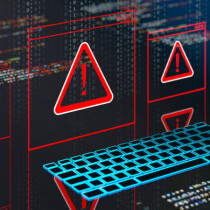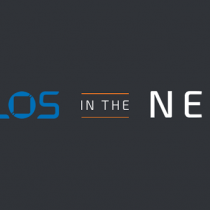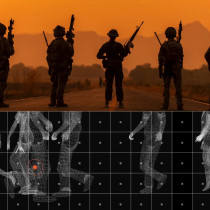CERT Advisory CA-2001-24 Vulnerability in OpenView and NetView
ovactiond is a component of OpenView by Hewlett-Packard Company (HP) and NetView by Tivoli, an IBM Company (Tivoli). These products are used to manage large systems and networks. There is a serious vulnerability in ovactiond that allows intruders to execute arbitrary commands with elevated privileges. This may subsequently lead to an intruder gaining administrative control of a vulnerable machine.
There is a vulnerability in ovactiond that allows an intruder to execute arbitrary commands by sending a malicious message to the management server. These commands run with the privileges of the ovactiond process, which varies according to the operating system. OpenView version 6.1 is vulnerable in the default configuration. Versions prior to 6.1 are not vulnerable in the default configuration, but there are public reports that versions prior to 6.1 may be vulnerable if users have made customizations to the trapd.conf file...
-----BEGIN PGP SIGNED MESSAGE-----
CERT Advisory CA-2001-24 Vulnerability in OpenView and NetView
Original release date: August 15, 2001
Last revised: --
Source: CERT/CC
A complete revision history can be found at the end of this file.
Systems Affected
* Systems running HP OpenView Network Node Manager (NNM) Version 6.1
on the following platforms:
* HP9000 Servers running HP-UX releases 10.20 and 11.00 (only)
* Sun Microsystems Solaris releases 2.x
* Microsoft Windows NT4.x / Windows 2000
* Systems running Tivoli NetView Versions 5.x and 6.x on the following
platforms:
* IBM AIX
* Sun Microsystems Solaris
* Compaq Tru64 Unix
* Microsoft Windows NT4.x / Windows 2000
Overview
ovactiond is a component of OpenView by Hewlett-Packard Company (HP)
and NetView by Tivoli, an IBM Company (Tivoli). These products are
used to manage large systems and networks. There is a serious
vulnerability in ovactiond that allows intruders to execute arbitrary
commands with elevated privileges. This may subsequently lead to an
intruder gaining administrative control of a vulnerable machine.
I. Description
ovactiond is the SNMP trap and event handler for both OpenView and
NetView. There is a vulnerability in ovactiond that allows an intruder
to execute arbitrary commands by sending a malicious message to the
management server. These commands run with the privileges of the
ovactiond process, which varies according to the operating system.
OpenView version 6.1 is vulnerable in the default configuration.
Versions prior to 6.1 are not vulnerable in the default configuration,
but there are public reports that versions prior to 6.1 may be
vulnerable if users have made customizations to the trapd.conf file.
On June 21, 2001, HP released a security bulletin (HP SB #154) and a
patch for this vulnerability in OpenView version 6.1. For more
information, see
http://us-support.external.hp.com/cki/bin/doc.pl/screen=ckiDisplayDocument?docId=200000055277985
http://www.kb.cert.org/vuls/id/952171
Tivoli NetView versions 5.x and 6.x are not vulnerable with the
default configuration. It is, however, likely that customized
configurations are vulnerable. This security vulnerability only exists
if an authorized user configures additional event actions and
specifies potentially destructive varbinds (those of type string or
opaque). Tivoli has developed a patch for versions 5.x and 6.x. The
patch addresses the vulnerability in ovactiond, as well as taking
preventative measures on other components specific to NetView.
Tivoli has published information on this vulnerability at
http://www.tivoli.com/support/
II. Impact
An intruder can execute arbitrary commands with the privileges of the
ovactiond process. On UNIX systems, ovactiond typically runs as user
bin; on Windows systems it typically runs in the Local System security
context. On Windows NT systems, this allows an intruder to gain
administrative control of the underlying operating system. On UNIX
systems, an intruder may be able to leverage bin access to gain root
access.
Additionally, systems running these products often have trust
relationships with other network devices. An intruder who compromises
these systems may be able to leverage this trust to compromise other
devices on the network or to make changes to the network
configuration.
III. Solution
Apply a patch
Appendix A contains information provided by vendors for this advisory.
We will update the appendix as we receive more information. If you do
not see your vendor's name, the CERT/CC did not hear from that vendor.
Please contact your vendor directly.
Appendix A. - Vendor Information
This appendix contains information provided by vendors for this
advisory. When vendors report new information to the CERT/CC, we
update this section and note the changes in our revision history. If a
particular vendor is not listed below, we have not received their
comments.
Apple
Mac OS X and Mac OS X Server do not have this vulnerability.
Computer Associates
Computer Associates has completed a review of all Unicenter functions
and processing related to SNMP traps as indicated by the advisory.
Unicenter is not subject to the same vulnerabilities as demonstrated
by the SNMP trap managers identified by CERT (i.e., OpenView and
NetView). CA Unicenter does not formulate commands determined through
trap data parsing. Unicenter implements this technology using
different methods and thereby avoids this exposure. Computer
Associates maintains strong relationships with these vendors and
recommends that clients running any environments containing either of
these products visit the website URLs specifically identified by the
CERT Coordination Center.
FreeBSD
FreeBSD does not use this code.
Fujitsu
Regarding VU#952171, Fujitsu's UXP/V operating system is not affected
because there's no implementation of any OpenView Technology in UXP/V.
Hewlett-Packard
On June 21, 2001, HP released a security bulletin (HP SB #154) and a
patch for this vulnerability in OpenView version 6.1. For more
information, see
http://us-support.external.hp.com/cki/bin/doc.pl/screen=ckiDisplayDocument?docId=200000055277985
http://www.kb.cert.org/vuls/id/952171
Microsoft
NNM is a third-party application as far as our platform is concerned.
We don't have any special relationship with it. HP would need to
provide the patches.
Tivoli
Tivoli acknowledges that certain user customizations to Tivoli NetView
may lead to a potential security exposure. Please reference
http://www.tivoli.com/support/ for further information and to obtain
an e-fix which addresses the issue.
References
1. http://us-support.external.hp.com/cki/bin/doc.pl/screen=ckiDisplayDocument?docId=200000055277985
2. http://www.tivoli.com/support/
3. http://www.securityfocus.com/bid/2845
4. http://www.kb.cert.org/vuls/id/952171
_________________________________________________________________
The CERT Coordination Center thanks Milo G. van der Zee for notifying
us about this problem, and Tivoli and Hewlett-Packard for other
information used in the construction of this advisory.
_________________________________________________________________
Feedback on this document can be directed to the authors, Jason A.
Rafail and Shawn Hernan.
______________________________________________________________________
This document is available from:
http://www.cert.org/advisories/CA-2001-24.html
______________________________________________________________________
CERT/CC Contact Information
Email: cert@cert.org
Phone: +1 412-268-7090 (24-hour hotline)
Fax: +1 412-268-6989
Postal address:
CERT Coordination Center
Software Engineering Institute
Carnegie Mellon University
Pittsburgh PA 15213-3890
U.S.A.
CERT personnel answer the hotline 08:00-17:00 EST(GMT-5) / EDT(GMT-4)
Monday through Friday; they are on call for emergencies during other
hours, on U.S. holidays, and on weekends.
Using encryption
We strongly urge you to encrypt sensitive information sent by email.
Our public PGP key is available from
http://www.cert.org/CERT_PGP.key
If you prefer to use DES, please call the CERT hotline for more
information.
Getting security information
CERT publications and other security information are available from
our web site
To subscribe to the CERT mailing list for advisories and bulletins,
send email to majordomo@cert.org. Please include in the body of your
message
subscribe cert-advisory
* "CERT" and "CERT Coordination Center" are registered in the U.S.
Patent and Trademark Office.
______________________________________________________________________
NO WARRANTY
Any material furnished by Carnegie Mellon University and the Software
Engineering Institute is furnished on an "as is" basis. Carnegie
Mellon University makes no warranties of any kind, either expressed or
implied as to any matter including, but not limited to, warranty of
fitness for a particular purpose or merchantability, exclusivity or
results obtained from use of the material. Carnegie Mellon University
does not make any warranty of any kind with respect to freedom from
patent, trademark, or copyright infringement.
_________________________________________________________________
Conditions for use, disclaimers, and sponsorship information
Copyright 2001 Carnegie Mellon University.
Revision History
August 15, 2001: Initial release









































































